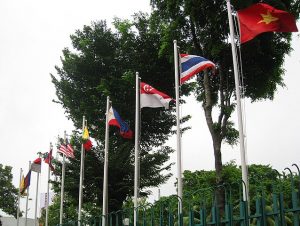Last week, Southeast Asian defense ministers finally adopted a set of multilateral guidelines to manage air military encounters – the first agreement of its kind in the world. Though this is just a first step, the adoption represents a significant step toward confidence-building measures in this realm by ASEAN.
As I have noted before in these pages, while there have been a series of confidence-building measures adopted in the maritime domain in recent years, such as the Code for Unplanned Encounters at Sea (CUES), there have been ongoing efforts to adopt such measures in other realms as well, including in the air.
In that respect, one of the key agenda items on the ASEAN defense side this year under Singapore’s chairmanship had been the adoption of guidelines to help reduce the likelihood of multilateral encounters or incidents involving ASEAN states’ military aircraft. The adoption of the guidelines would be a significant step in that they would be the first-ever adopted in the world.
Last week, the ASEAN Defense Ministers’ Meeting (ADMM) finally saw the adoption of the guidelines for air military encounters. The Guidelines for Air Military Encounters (GAME), though a voluntary, nonbinding set of measures, are designed as a practical confidence-building measure for militaries to improve operational safety in the air. They are meant to help manage unintentional encounters in flight between military aircraft over the high seas to avoid potential safety hazards.
With the adoption of GAME now finally occurring, the focus will move to the expansion of its support as well as efforts to see its gradual implementation. Therein will be its true test – as with other confidence-building measures, the effectiveness of GAME will lie in the willingness of states to actually adopt and then use the guidelines in practice over time.
Though it is still early days, one notable sign was the fact that the eight Plus countries’ defense ministers also agreed to explore the application of these guidelines by the ADMM-Plus. The support was expressed through a joint statement on practical confidence-building measures by the ADMM-Plus, one of two such joint statements issued and the first time since 2013 that the ADMM-Plus had issued such joint outcome documents.
To be sure, this is just a small step. Nonetheless, it does suggest that while there may be some celebration about the fact that this has been adopted by ASEAN states, this is in face just the beginning of some broader activity we could see in this realm in the coming years in the wider Asia-Pacific as well.

































